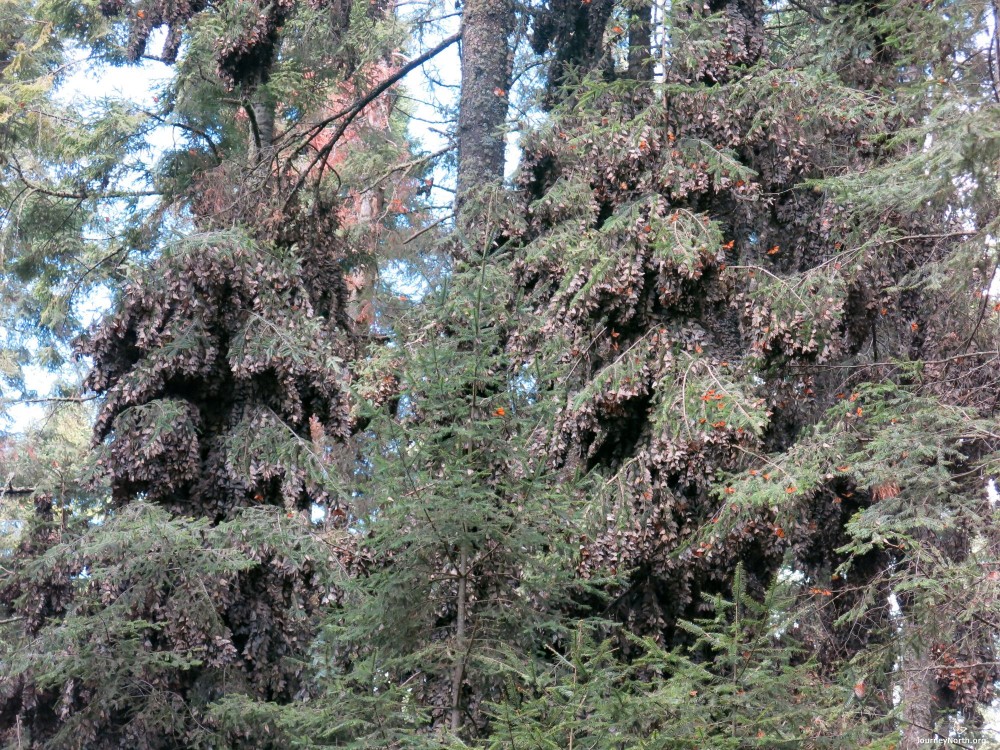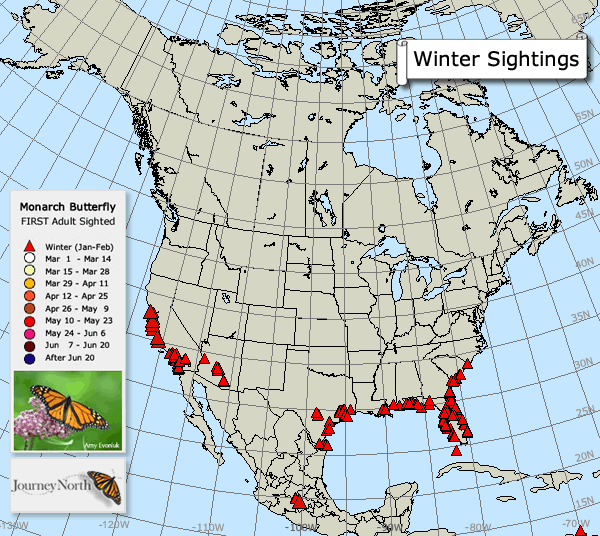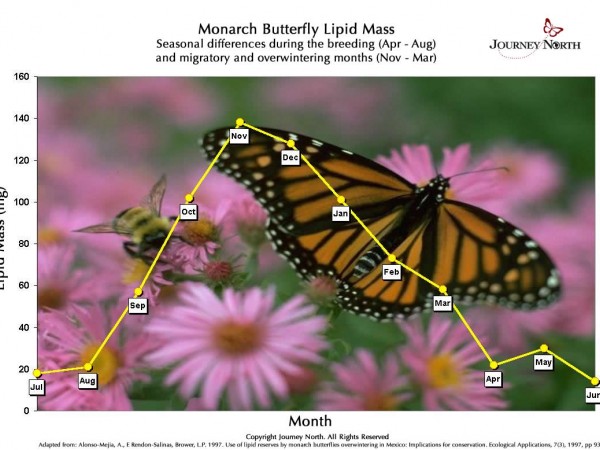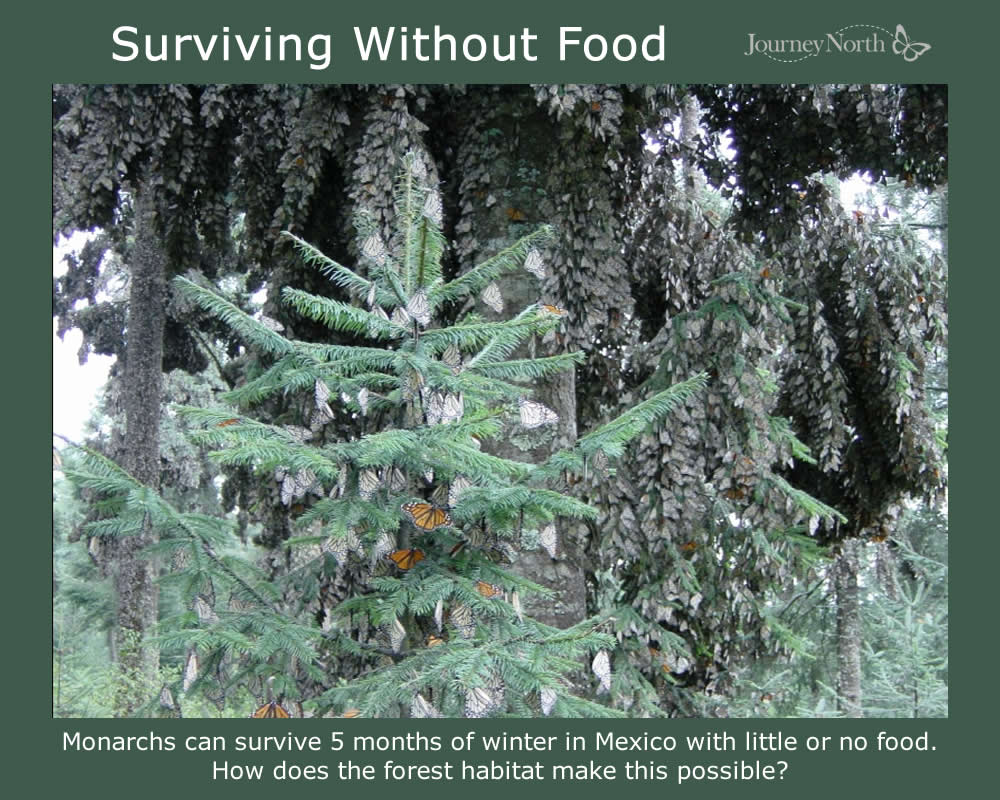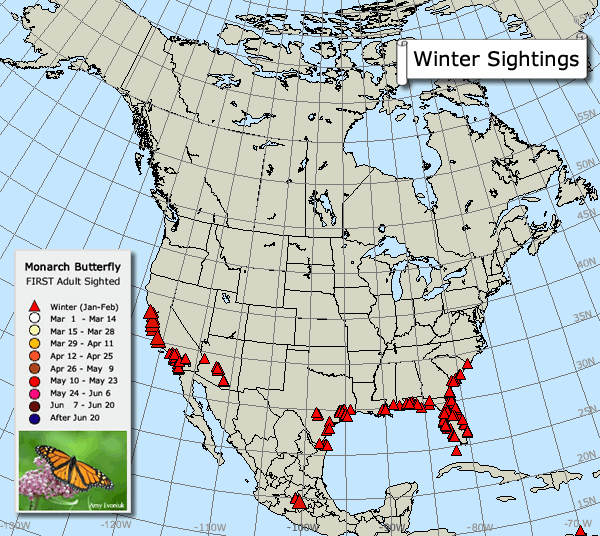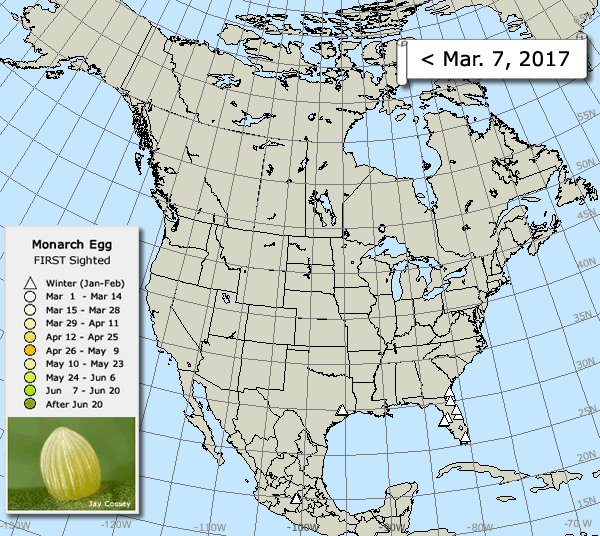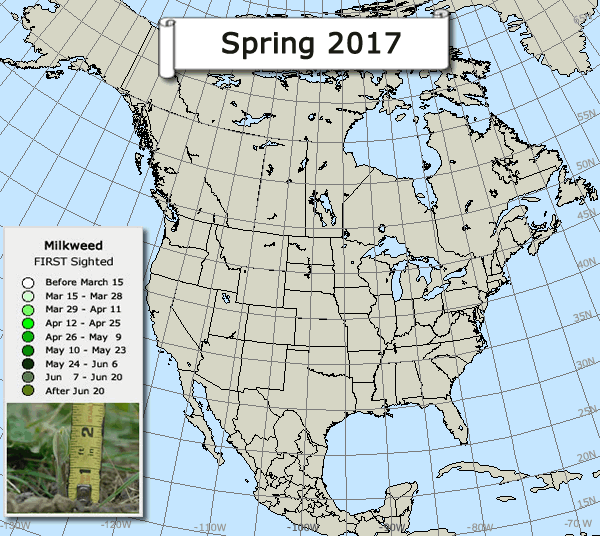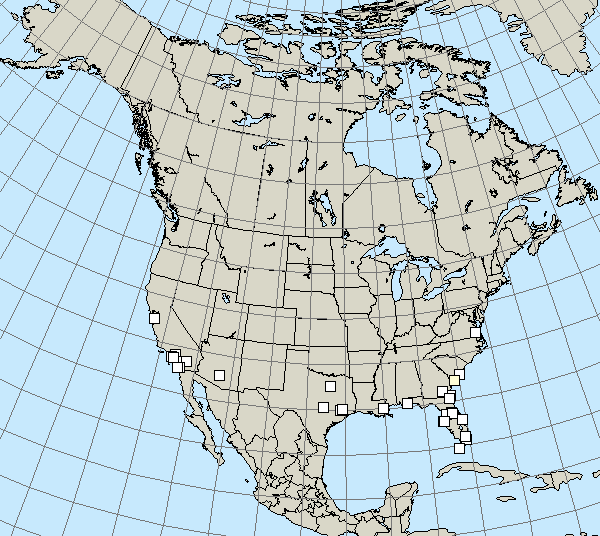Conserving Energy
News from Mexico
After this week's trips to the sanctuaries, Estela Romero reported that mating is still nowhere to be seen but should begin any day. Tourists are visiting from around the world and are delighted by the butterflies' performance and splendor. She remains concerned about this winter's unusually warm temperatures.
"Temperatures have been TOO HIGH for this time of year. Everyone around in town is commenting since we know it is not normal. Even in January some bright sunny days were reaching up to 22°C. How can the monarchs stand it? Let's hope it is more bearable for them in the forests."
Abnormally warm temperatures can present a problem: If it's too warm during the winter, the butterflies can burn their stored fat too quickly.
Lipids Falling
The graph shows how lipid levels change during the five months the monarchs are in Mexico. Their fat reserves should be about half gone by now. Have this winter's warm temperatures caused the butterflies to burn lipids more quickly? Running out of fat is a concern. Monarchs need enough fuel to survive the winter and to migrate north in the spring.
The secret behind the monarch's survival without food is the cool habitat it chooses in Mexico. "Cool temperatures in the forest slow down the monarchs' metabolism so they can stay alive longer," says Dr. Karen Oberhauser.

